On October 28, 1939, a skinny kid named Dan Ray Justice scored the first touchdown at Lynchburg’s brand new municipal football stadium.
Justice, a sophomore at Washington and Lee University, was no stranger to football fans in Lynchburg, Virginia. He’d played high school ball for the hometown team, E.C. Glass High School, and was even named “Best Athlete” his senior year.
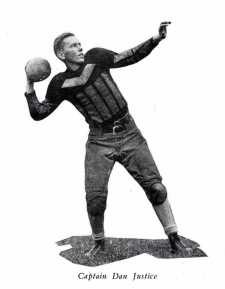
While it’s likely many of the 12,000 spectators who came out for that first game at Lynchburg City Stadium knew Justice and had seen him play football in high school, what they couldn’t know as they took their seats in the bleachers was that Justice would be the hero of the game.
On that fall afternoon, the W&L Generals were playing Virginia Agricultural and Mechanical College and Polytechnic Institute, now commonly known as Virginia Tech. Tech, then nicknamed the Gobblers, was reportedly a much-bigger team and was expected to win.
From the beginning, the game’s outcome seemed a foregone conclusion — that is, until Justice picked up a Tech fumble late in the first period and turned what was supposed to be a throttling by Tech into a David and Goliath story.
Here’s how The Ring-tum Phi, W&L’s semi-weekly newspaper, later described it:
Capitalizing on a Gobbler fumble on their own 31-yard line in the waning moments of the first period, the General offense shifted into high and before the mighty VPI forward wall realized what had happened diminutive Dan Justice cut back over his own right tackle to cross the double marker for the only six-pointer of the game.
The article goes on to say that “Lynchburg’s pride and joy, diminutive Dan Justice” was the game’s stand-out player:
Justice scored the only Big Blue touchdown, did most of the passing, ran the ball one out of every three times, and gave probably the finest exhibition of punting the Lynchburg stadium will see in a long time.
Near the end of the third quarter, the Generals found themselves in a bit of trouble. Justice, standing in the end zone with the wind at his back, calmly booted to the VPI 24-yard line, a distance of 74 yards.
W&L went on to win 6-0.

It would be nice to say this story has a happy ending, that Justice was carried around the field atop the shoulders of his teammates and that he graduated from W&L and went on to marry, have children and live a long, happy life.
It doesn’t.
Justice did finish at W&L, but when World War II broke out, he enlisted in the U.S. Marines. He served as a second lieutenant with the 12th and 3rd Marine divisions until he was killed in action during the second Battle of Guam on July 23, 1944 (sometimes reported as July 22).
He is buried in Honolulu, Hawaii, at the National Memorial Cemetery of the Pacific.
Even though he died on a battlefield far from home, Justice wasn’t forgotten. Since 1946, Washington and Lee has presented the Dan Ray Justice Memorial Football Award to its most-valuable offensive player. Lynchburg alumni of W&L also erected a monument to Justice at Lynchburg City Stadium.
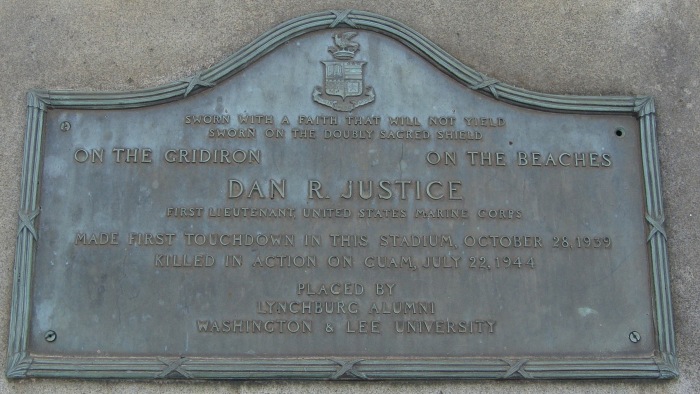
Hopefully, with these efforts, the “diminutive” young man once called “Lynchburg’s pride and joy” will never be forgotten.
Here are some more images you might find interesting:
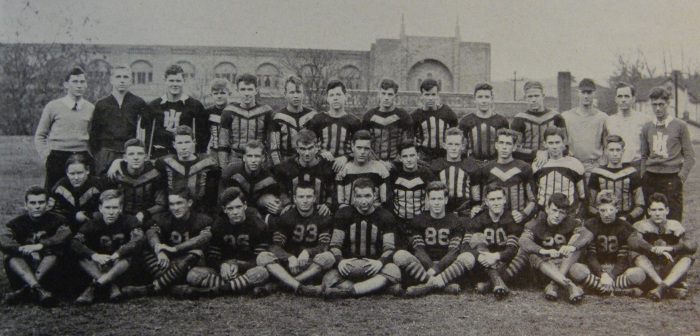
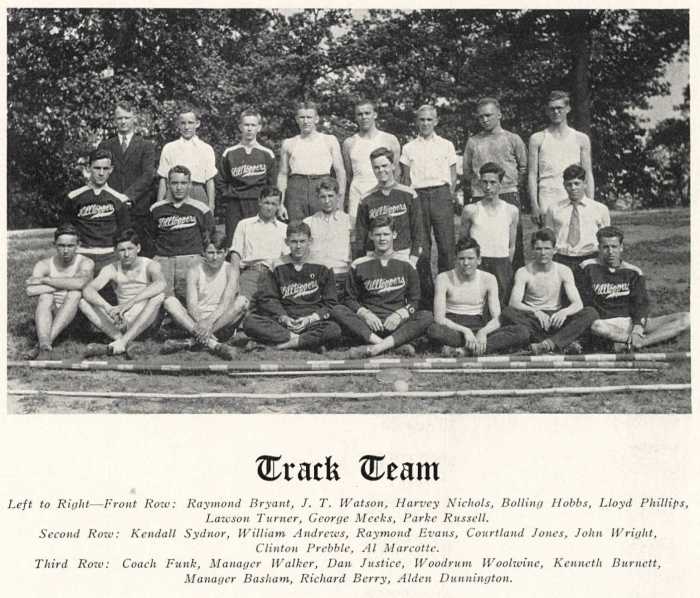
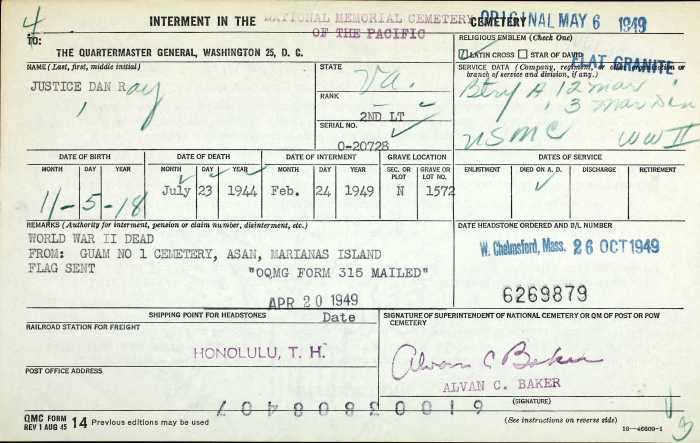
So sad that he died in WWII. I love learning more about history, especially local history, from your blog posts.
LikeLike
Thanks! I enjoy researching and writing them!
LikeLike
Great story. When Charlie “Choo Choo” Justice was a big North Carolina
name, my dad said there was one in Lynchburg just as good.
LikeLiked by 1 person
Thanks, Bob! I’ll have to look up Choo Choo Justice!
LikeLike
https://en.wikipedia.org/wiki/Charlie_Justice_(halfback)
LikeLike